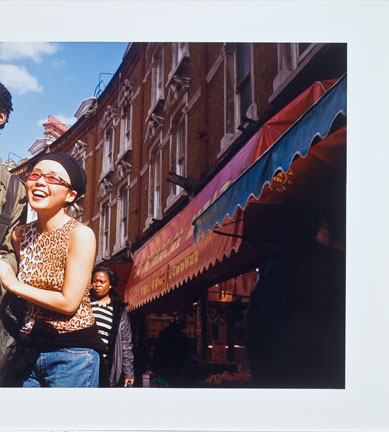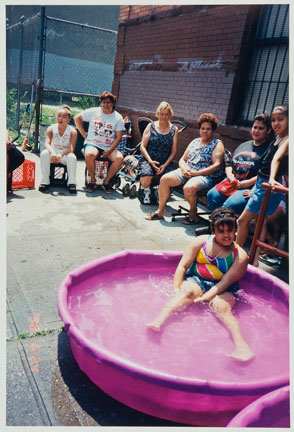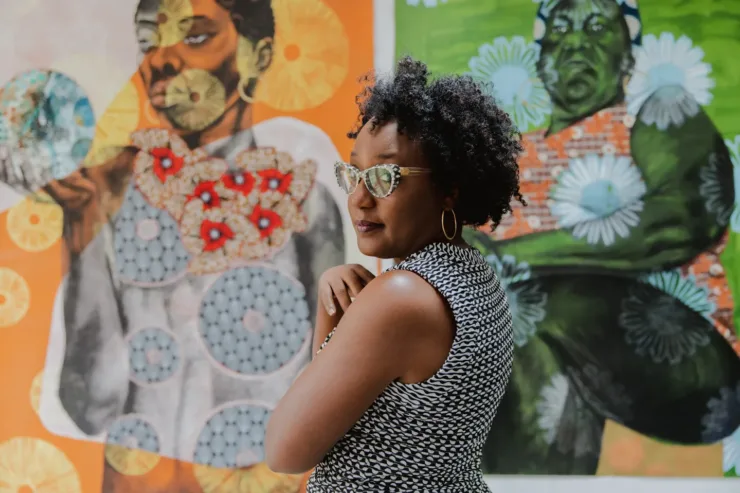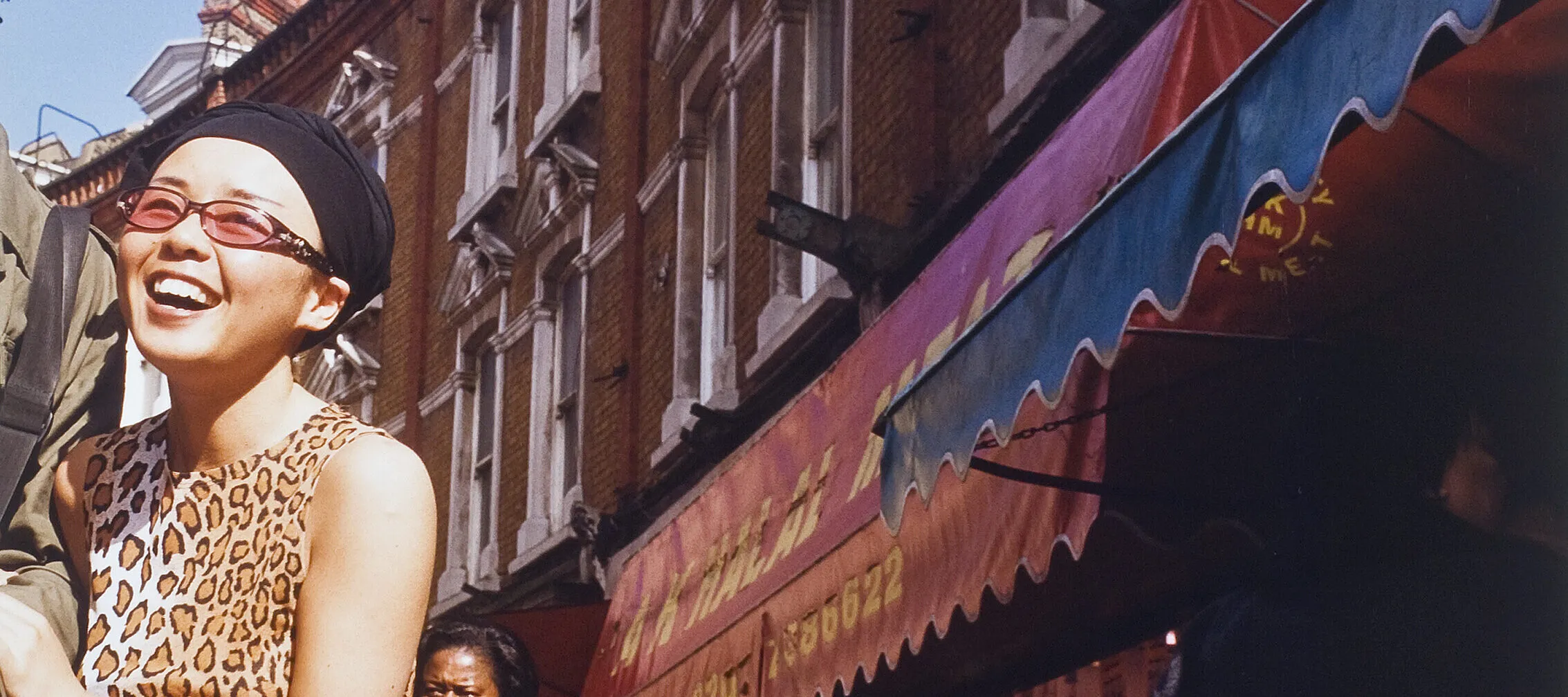The old cliché “a picture is worth a thousand words” may actually be true of photographs by Nikki S. Lee in NMWA’s collection. In her series “Parts,” Lee curates scenes of herself with a significant other showing intimate dynamics and details of a relationship, then physically cuts her partner out of each printed photograph.

This mysterious process imbues meaning and surprise: Lee often created varied, in-depth narratives around her scenes, from routine day-to-day activities to cheerful tourist-style snapshots, to a woman on her wedding day. Her cuts force viewers to focus on the emotions—anger, heartbreak, a wish to forget—with which someone might cut a formerly beloved person out of a photo.
In an interview, Lee said, “The purpose of the cut is to make people curious about the missing person and to think how his identity has affected the woman who is left behind. It forces people to examine the relationship itself, even if it is only part of the story.”

This series is not Lee’s first major photographic undertaking. For her “Projects” series, Lee insinuated herself into subcultural groups, working for two to three months to be accepted in each social group. These groups included seniors, Hispanics, swingers, yuppies, lesbians, and others. For each project, Lee changed what she wore, where she shopped, and how she presented herself. After she had spent time with them, she would ask a friend or passerby snap a picture of the group. These photographs—simultaneously staged and casual—are less than professional, even including the date and timestamp from the small digital cameras used to take them.
The “Projects” series is less about artistic beauty, and more about exploring the many facets of oneself. Lee has said that each of the roles she played during this project made up a piece of her. She examines the ways that a person can be made up of many disparate identities and personality traits, and she also examines the way that being surrounded by different groups of people who share those traits can completely change how you are perceived by others.
Each of Lee’s series analyzes the deeper meanings of outward identities. She focuses on how identities can be changed by who we surround ourselves with, what we wear, and how we act. While “Parts” spotlights the ways the relationships affect our lives, “Projects” demonstrates the fluidity of identity that people use to define others as well as themselves.

